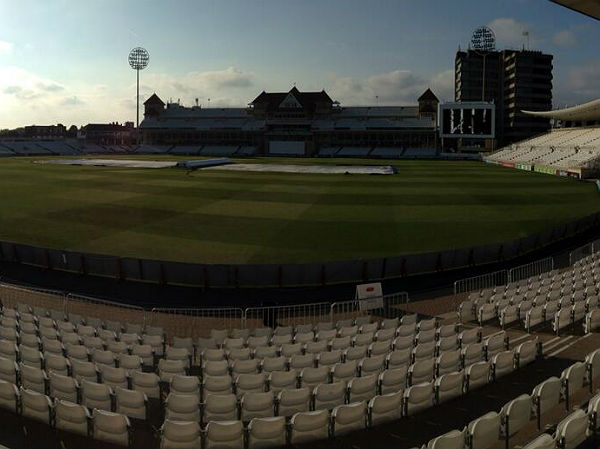For years, Trent Bridge has been known as a seamers dream. With the pitch usually shaded by a tinge of green, bowlers like James Anderson have relished in the swing-friendly conditions.
Not this year.
Following an incredibly dry start to 2013 in Nottingham, the curators at Trent Bridge have produced a flat wicket that could mean the first test has ‘draw’ written all over it.
While the conditions could favour England’s reverse swing bowlers like Anderson and Stuart Broad later in the match, they’re likely to initially suit Australia’s stump-to-stump bowlers such as James Pattinson and either Peter Siddle or Jackson Bird over the first three days.
Meanwhile the abnormally hot and windy weather in the midlands over the last two weeks could see the pitch crack up towards the end of the test. Therefore when Alastair Cook and Michael Clarke go to toss the coin on Wednesday morning, only one thing will be on their mind – bat first.
https://twitter.com/Aggerscricket/status/354299682572349442
In the last month, the unusual and stark dryness and flatness of the Trent Bridge wicket has seen a flurry of runs in County matches. The average score in Nottinghamshire games at Trent Bridge throughout June and July has been just over 452 per innings, while an average of less than 16 wickets per match have been taking throughout the four-day County games.
It’s a remarkable statistic, especially considering Trent Bridge’s recent history of producing bowler-friendly wickets.
Nottinghamshire captain and former England wicket keeper Chris Read has a theory on why the Trent Bridge pitch is suddenly so dry.
“The square has been changing for the last three or four years,” Read said. “A lot of people have put it down to the new outfield – the one at Trent Bridge is fantastic in terms of absorbing the water from rain, but the theory is that it is also sucking moisture from the square.
“I certainly think that for the majority of our games this year there has been less moisture in the ground and it’s therefore been giving less assistance to the quick bowlers.”
With that said, the captain who wins the toss will be eager to bat first and produce a score well in excess of 400.
Furthermore, the best time to bowl will be on days four and five, when the pitch begins to deteriorate and favour reverse swing and spin bowling. This is where the likes of Mitchell Starc, Nathan Lyon, Anderson and Graeme Swann can put opposing batsmen under real pressure – especially if they’re chasing a large total.
One more sleep… #Ashes #ReturnTheUrn pic.twitter.com/zWbwzWzRRN
— cricket.com.au (@cricketcomau) July 9, 2013
With that in mind, Australia’s selectors could be tempted to throw Ryan Harris’s name into the mix for the first test, given his prowess to swing the ball both ways late in a match. Alternatively, Pattinson and either Siddle or Bird will offer more in the opening days where the test can be won and lost.
The first test promises to be an intriguing contest. On a pitch where almost nobody knows exactly what will be dished up and when, anything could happen. Regardless, it’s imperative for the side that wins the toss to bat first and make a statement for the rest of the series. By the looks of things, Trent Bridge could be the perfect pitch to do just that.
Riley Beveridge is a second-year Bachelor of Sports Journalism student at La Trobe University. You can follow him on Twitter: @RileyBev
Photo: Twitter – @AggersCricket







